Text
Are We Fur-ist?

Ever since I got my first apartment, I've wanted a black cat. I mean, is there anything more adorable than a face that's basically just a pair of giant eyes? Black cats make my heart melt. But apparently, I may be part of the minority in this sentiment.
“Black Dog Syndrome,” is the idea that animals with black fur spend more time in shelters than their lighter-furred counterparts. Does this reflect a bias against dark-furred animals? Let's investigate a little closer.
Many animal shelters will attest to the fact that black-furred pets wait longer to be adopted. Some hypothesized reasons include dim lighting, superstition, and the “blandness” of dark fur. Film and television don't help, as black animals are typically portrayed as dangerous, unlucky, or evil. Putting stereotypes aside, darker colors are scientifically proven to recede and therefore lighter-furred cats and dogs will stand out more to potential adopters. According to petfinder.com, black pets have been reported to stay at the shelter for four times as long, and they are the most likely fur color to be euthanized.
But is this the whole story? Vetstreet.com reports that black dogs make up 32 percent of adopted dogs, with brown dogs coming in second at 22 percent. Black pets make up about a third of the shelter animals that come in every year, which could explain why they would be more likely to stick around longer.
Regardless of the data, animals with black fur tend to be left behind more often than other pets, so it's important to give them your support because every pet deserves a home whether they're brown, black, or aquamarine!
Sources:
https://www.petfinder.com/pet-adoption/dog-adoption/black-dog-syndrome/
http://www.vetstreet.com/our-pet-experts/is-it-a-myth-that-black-shelter-pets-are-less-likely-to-be-adopted
http://www.today.com/pets/puppy-prejudice-are-black-animals-less-likely-be-adopted-4B11204642
1 note
·
View note
Text
Puppy Mills in the U.S. and How You Can Help
Puppy mills are commercial dog breeding operations that profit from the selling of puppies regardless of the well-being of the dogs and responsible breeding practices. Puppy mills pray on the desire to own a purebred dog. With unsafe breeding practices, potential owners could buy a sickly puppy or worse a puppy with a genetic defect that could cause it endless pain or an untimely death. The majority of puppy mill dogs can be found at pet stores. Do not be fooled by pet stores who claim to buy their puppies from responsible and credible breeders. Puppy mills are operating all over the U.S., but there are steps that can be taken to get rid of puppy mills for good.
Adopt if you want a pet.
Remember, puppy mills are only operation because of the demand for puppies. If people stopped buying puppies from pet stores, then pet stores will stop ordering puppies, which will cause puppy mills to produce fewer puppies until there is no profit to be made.
Do not buy a puppy online or from a pet store.
If you want a purebred dog, always check the shelters. Owners of purebred dogs also move and their life circumstances also change, causing them to no longer be able to care for their dogs, resulting in many purebred dogs being surrendered to shelters. You can also go to akc.org to find credible breeders, but we do stress that you give adoption a try first!
Take action against pet stores.
Hold peaceful rallies that protest against pet stores that get their puppies from puppy mills. Support legislation that regulates the breeding of pets. Ask government officials to pass stricter laws about the breeding of animals. Raise awareness on social media. See if your local pet store will agree to adopt out dogs who have been surrendered or abandoned instead of selling puppies from puppy mills.
Report bad pet stores.
If you bought a puppy from a pet store and the puppy was sick, report them. You can send a complaint to the Better Business Bureau (BBB). If you want to take it a step further, you can also contact animal control and the attorney general in your state to file a consumer complaint.
Even though puppy mills are all over the U.S., if each one of us sets out to stop puppy mills, then they will cease to exist. By supporting your local animal shelter and animal rescue organization, you can help make this happen.
0 notes
Text
What to Do If You Come Across a Stray Dog
Remember that time when you were a toddler in the shopping mall and you couldn't find your mom? Suddenly you turned around and she was gone, and the more you looked for her the more worried you became. You felt lost, abandoned, afraid. That's how strays feel.
If you ever find a stray dog, keep in mind its fear and confusion. Never assume that it's been living on the streets for a while because its owners didn't want it. Many strays are just lost pets trying to find a way back home, so it's up to you to help out! There are several steps you should take if you happen to come by a stray dog.
Assess the situation
Is this an adorable little lap dog who's just a little lost; a big, anxious German Shepherd; or a sick or severely injured dog? While you can't judge a book by its cover, it's a good idea to be cautious when approaching any stray, especially if the dog looks fearful and you are afraid you can’t safely lend a helping hand. If the dog looks threatening, call animal control to take care of the situation. It's a good idea to stick around if you do this, in case they have questions or the dog starts to wander away before they get there. But if you're absolutely sure the stray is friendly, entice it to come over and proceed from there.
Look for a tag or collar
Odds are a clean, healthy looking, and friendly dog has just recently gotten lost. You're likely to find a collar with some form of identification on the little furball, so make sure you check. Even if you can't find any useful information on the collar, any markings are helpful for putting up “Found Dog” notices. That way the reader can be more confident that it is (or isn't) their dog upon first glance.
Take it to the shelter
If you couldn't find any forms of ID on the dog, it could be microchipped. The shelter can check for this and it's definitely a good idea to take the stray there, if it's able and willing to be transported. The shelter can also tell you if anyone is looking for a dog that matches the stray's appearance. If you still can't find its owner and nobody else is able to take in the dog, the shelter is where you should drop it off. NOT back on the street.
Take it to the vet
Let's say you haven't given up yet. Try to take the stray to the vet in the meantime because who knows what it got itself into on the streets. The vet can assess the dog’s health and begin any needed treatments, provided you're willing to pay the fees. But everything in life comes with a cost, and an adorable animal is definitely worth it, and the feeling that you’ve made a difference in this dog’s life is pretty awesome!
Consider adopting it
So you've taken the dog to the shelter, put up flyers, and asked around, and you still haven't found any takers. And those big brown eyes are so full of love that you've already come up with a name for it, even though you won't admit it to yourself. If you're absolutely sure you can handle it, consider adopting the stray on your own. But keep in mind that even after a few months, its owners could come knocking and expect to get their Grover back. It's a tough call, but when the time comes, you'll know what to do.
Source:
http://www.cesarsway.com/dogcare/health/What-to-Do-if-You-Find-a-Stray-Dog
0 notes
Text
Five Reasons Why Animals Are Given Up (You'd Be Surprised!)
When I was younger, my teachers liked to pass around a jar of candy on special school days. If I happened to be sitting in the back, the jar would arrive picked clean except for a few lonely Starbursts stuck to the bottom – the few candies I assumed no one else wanted. Sadly, people have a habit of applying this same unfortunate logic to shelter pets.
There's a belief that the mutts (and purebreds – yes, them too) who end up in the pound were the ones that nobody wanted: the pets at the bottom of the metaphorical jar – the pets many assume have something wrong with them. You couldn't be more wrong. There are tons of reasons why pets are given up, and most often, it isn’t the pet’s fault. For the sake of this blog, I'll narrow it down to five:
1. No time
How many times have you picked up a hobby, only to realize that there's no time in your life for such a project? Unfortunately, this happens a lot with pets as well. People like the idea of a cute little kitten or puppy, but they don't often think the whole thing through. Four weeks later, they find themselves handing in Fluffy to the local animal shelter because they don't have enough time to give their pet the attention and care he needs and deserves.
2. Wrong fit
In addition to thinking about the amount of time you need to devote to caring for a pet, you also need to think about how a pet might fit into your life. A mastiff is going to have a hard time playing inside a studio apartment, and two kittens aren't the best match for a frat house. Adopting a pet takes a lot of planning, and people often let their impatience get the best of them. The idea of gaining a new furry friend is exciting, but that doesn't mean you should rush out to adopt a new pet. Think about it, sleep on it, and wait to adopt until you're fully aware of what you're getting yourself into.
3. Allergies
This one is a little more forgivable. You've finally gone through all the paperwork, dotted your i's, and crossed your t's, only to realize that you're deathly allergic to Spot. It happens, but it can be avoided by, again, thinking things through. Go to the doctor and make sure your sinuses will love your new pet just as much as you do, and see if you can take your potential new dog or cat home for a few days for a trial period. This will not only allow you to see if you have any allergic reactions, but will also give you an idea as to how your new pet will fit into your family.
4. Children
A new dog will keep Johnny and Sophie entertained, right? Well, maybe. The thing is, not all pets like kids and not all kids like pets. Sometimes they get along great. Other times, you get grey hairs worrying about pulled tails or rough play. Many dogs find themselves in the pound because they're just not compatible with children (it's okay—neither am I!), or their owners are unable or unwilling to get the training needed to ensure that their dogs and kids have safe and appropriate interactions. If you've done your research and you're sure that the pet you're getting is kid-friendly, go ahead and adopt. If not, a stuffed animal may be a better fit!
5. Commitment
Commitment encompasses all the extra care, money, and love you're able to give. Do you like to go on vacations? Who will watch your pet? If your pet gets injured or sick will you be able to pay the vet bill and give your pet the attention and care she needs while recuperating? Many people think something along the lines of “How hard could it be?” a week or two before they decide to give up their new pet. Don’t let this happen to you.
Think things through, plan ahead, and, oh yeah, think things through. That's why our animal shelters are teeming with wonderful dogs and cats who need homes. There is no “bottom of the barrel” for pets—just loving companions who have had some bad luck and simply need a second chance.
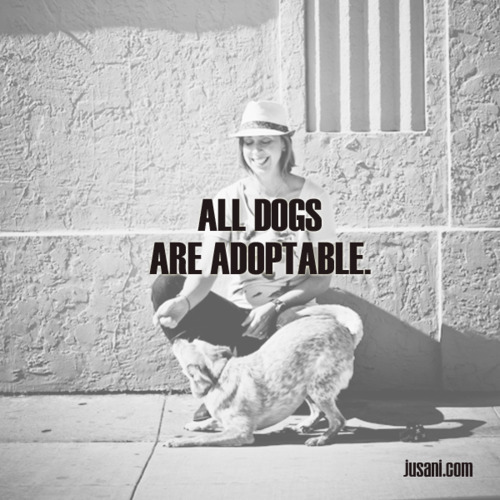
0 notes
Text
Dos and Don’ts of Rescuing a Stray Dog

It is easy to say that you would love to help all the stray animals; however, when a stray animal is found, a lot of people have no idea what to do to help that animal, especially a stray dog. Rescuing a stray dog can be dangerous for the person as well as the dog. If you see a stray dog and you fear that animal control may not make it in time to save the dog from getting hit by a car or succumbing to an injury and you want to take action, here are some dos and don’ts.
Do not be apprehensive or anxious.
If the dog is near a busy highway and you are apprehensive or anxious, you could scare the dog as you approach him, putting him at risk of darting into traffic. By not being calm, the dog could also respond in fear and bite you.
Do have something to shield yourself with.
The stray dog may become hostile while you are trying to restrain and capture it. Make sure to have something that you can shield yourself from bites. A stray dog, more than likely, will not be up to date on shots, so try to avoid being bitten.
Provide the dog with a sense of security.
Let the dog know that your intentions are good. Provide the dog with food and do not rush the interaction. Be mindful of mannerisms that lead to hostility. Remember, you do not want to startle the dog, who is probably already afraid and unsure of your intentions.
Be patient.
Restraining the dog may take some time. However, if there is limited time, calling animal control may be the best solution.
Once the dog is restrained, the next step is to allow animal control to take it from there (if called) or take the stray dog to the nearest veterinary clinic or animal shelter to check for a microchip as well as ailments. If no microchip is found, posting flyers around the area the dog was found or posting to social media could help the owners to locate their lost pet. If no one steps forward as the owner, you have the choice of releasing the dog to a shelter or adopting the dog yourself.
0 notes
Text
Benefits of the Microchip

1 in 3 pets will get lost during their lifetime. More than 5 million pets get lost every year. Without ID, more than half of pets lost will not return home. No one ever wants to deal with the pain of losing a pet; however, it does happen, and there are things that can be done to keep that from happening: fences, a reliable leash, and microchipping.
There are plenty of benefits to microchipping your pet. The most important benefit is that it will assist in helping find your lost pet. Unlike collars, it can never be worn down and it can never come off. Microchipping will last the life span of your pet. Why is this important? It is important because you never know when Fido may dig underneath the fence or if Mrs. Fluffy runs out of the house. Microchipping increases your chances of being reunited with your pet. Each microchip has the owner’s current contact information to make sure that if the pet is found, it can easily be reunited with its owner. Think of microchipping as an additional insurance policy for your pet.
Some worry that microchipping is harmful or painful. The procedure is a simple and painless and does not require surgery. The risk of complications (short-term or long-term) is extremely limited. Additionally, depending on which brand you choose, the network that the microchip is linked with could consist of all the counties in your state or it could reach nationwide. If your pet is ever stolen or lost, the chances of finding your pet is much higher if your pet is microchipped, allowing your local animal control officer or animal shelter the ability to quickly scan for a microchip and get your contact information, resulting in a reunion between you and your pet!
Hopefully, after seeing all of the benefits of microchipping, you will have your pet microchipped! Links to common microchipping brands have been provided below.
http://public.homeagain.com/
https://www.petlink.net/us/cms2.spring?path=/welcome.html
0 notes
Text
Do You Have What It Takes To Become a Foster Parent?




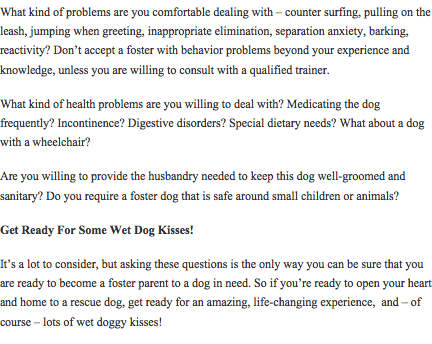
#foster#foster pets#foster puppy#animal shelter#shelters#jusani#parent#euthanisation#kiss#happy valentines day
0 notes
Text
Celebrity Pets—They're Just Like Our Pets!
Taylor Swift is one of the biggest stars on the Internet nowadays. It only makes sense that her cats, Meredith and Olivia Benson, are nearly as famous. She takes them on walks. She posts pictures of them on Instagram. And she even throws them dinner parties (http://www.teenvogue.com/entertainment/2015-01/taylor-swift-karlie-kloss-dinner-party).
If there's one thing we plebeians have in common with celebrities, it's our love of animals. We give them sweaters, push them around in strollers, and give them the cutesiest, craziest names we can think of. For instance, funnyman Adam Sandler named his furry friend Matzoball! Academy Award winner Natalie Portman has a dog named Noodles, and artist 50 Cent decided to name his pet Oprah (I think it's only fair that Oprah names her next cat after the famous rapper).
So who are the “dog people” and who are the “cat people”? On the canine side, we have Jake Gyllenhaal, Jennifer Aniston, Miley Cyrus, Ashley Olsen, and Usher. Celebrity cat lovers include Katy Perry, Ed Sheeran, Halle Berry, and the aforementioned Taylor Swift. And it's not just cats and dogs: soccer star David Beckham owns two micro pigs, which cost him over $2,200. And Mike Tyson, the feared boxer, keeps domesticated pigeons as pets. Apparently they're therapeutic—who knew?
It's safe to say that although most of us can't afford thousand-dollar pigs, we're on the same page with celebrities when it comes to our pets. Cat, dog, or turtle, we love 'em all the same! Tell us about your pets' names—any Matzoballs or Oprahs out there?

Sources:
http://www.dogpsycho.com/dog-guides/dog-naming-guide/celebrity-dog-names/
http://www.popsugar.com/celebrity/Celebrity-Dog-Lovers-22605970?stream_view=1#photo-22606641
http://www.popsugar.com/celebrity/Celebrity-Cat-Ladies-Pictures-35868518#photo-35868518
http://list25.com/25-oddest-celebrity-pets/2/
1 note
·
View note
Text
Get That Chocolate Outta Here! What Not to Feed Your Pets
The majority of us have all succumbed to the sweet, decadent, guilt feeling treat called chocolate. Some people like milk chocolate. Some people like dark chocolate, and some even like white chocolate. However, our furry friends will never have the luxury of enjoying chocolate. Too much chocolate for us can lead to stomach ache. Just a little chocolate can be toxic to our feline or canine companion, and too much can lead to death.
Chocolate is toxic to dogs and cats because it contains theobromine and caffeine. Dogs and cats can not break down and digest theobromine very well, which causes it to remain in their systems. Some symptoms of chocolate poisoning are vomiting, diarrhea, rapid breathing, and increased body temperature. If you suspect your pet has ingested chocolate, take them to the nearest veterinary clinic immediately.
I am sure a lot of people think okay, they can’t have chocolate, then I can get them something else. Table scraps can be as deadly as chocolate. Chocolate isn’t the only food that your pet can’t eat. Avocado, bread dough, alcoholic beverages, grapes and raisins, hops, macadamia nuts, onions, and garlic all can be deadly to your pet. Detailed information on these toxic foods can be found on the ASPCA's Website.
Now, to keep your furry companion from trying some of your food, you have to make them something equally as good, and kibbles are simply not enough. There are plenty of dog and cat treat recipes on the internet that can be googled. They range from sweet potato meatballs to catnip fish. If you are not skilled in the kitchen or simply do not have time to make homemade goodies, there are other options.
A quick Google search can tell you if there is a local shop where you can buy handmade, all-natural treats. And if there isn’t a local pet bakery in your neighborhood, you might be able to have these goodies shipped right to your doorstop. Now that’s a win-win for you and your pets!
0 notes
Text
What's the Perfect Pet for You?
Did you know that Elvis had a pet kangaroo? And famous surrealist Salvador Dali apparently kept an anteater as a pet. While these options may be a little exotic for the average citizen, there are many ways to figure out which animal will work best for you.
Commitment
How much time are you willing to put into taking care of your pet? Are you looking for an animal that will need you just as much as you need them, or one that tends to be a bit more aloof? Keep in mind the life span of certain pets as well because some dynamic lifestyles are better suited to a rodent than a hardy German Shepherd.
Environment
Pets are adaptable, but sometimes things just aren't going to work out. For example, it's ill-advised to bring a Rottweiler into a studio apartment, or to get a pet python for your two-year-old. Keep in mind your living situation, children, and presence of other pets, as animals are frequently given up due to these factors.
Personality
One of the most obvious factors in picking out a pet is its character. What do you value most? Friendliness? Independence? Intelligence? You can't completely generalize a species, but if you're looking for a smart and perceptive pet, I'd steer clear of a goldfish. On the other hand, if you're looking for something low-key and temporary, clear off some space on your desk and get the fish! Just don't put it in a tiny fishbowl. Science-y people have proven it's a terrible environment for your aquatic pet (http://finatics.hubpages.com/hub/why-fish-bowls-are-bad-for-your-fish).
Some other things to keep in mind are your budget, allergies, and energy level. As you can see, there are a lot of factors to consider when choosing a pet—don't just jump into it! Think things through before you take in a new pet.
Sources:
http://www.oddee.com/item_98880.aspx
http://www.selectsmart.com/PET/
0 notes
Photo

Do Animals Dream?
We have all been witness to the twitching lips and haphazardly thumping tails that accompany the sprawled over on their backs dream-running of our pups. They hurruff-bark - eyes a rolling – and you can just imagine which favorite bunny they are hunting or squirrel they are treeing in that moment. Even so, science is out on whether animals dream.
Leading American sleep researcher Jerome Siegel PhD, Professor of Psychiatry at UCLA Center for Sleep Research says that the key to understanding our own sleep is through studying animals. Animal sleep research has become a key field in developing potential cures for human sleep disorders such as narcolepsy.
Rapid Eye Movement is the fifth stage of the sleep cycle and the only stage associated with dreaming. Human sleep cycles last between 90 and 110 minutes, whereas the sleep-wake cycles studied in domestic dogs and cats is much shorter. According to Adrian Morrison DVM PhD, Professor of Behavioral Neuroscience at the University of Pennsylvania Veterinary Center, “mammals all have the same fundamental sleep cycle,” eventually reaching REM during the average sleep. These brain wave patterns have been observed across species.
But, how do you know if humans dream? You ask them. Brain wave patterns during REM sleep are not indicative of whether or not the studied animal is dreaming, only whether it has reached the fifth stage of the sleep cycle.
Nonetheless, animal sleep studies continue, and the findings are incredible. In a summary of studies published by the American Psychological Association (APA) in 2001, there were findings that cetaceans sleep uni-hemispherically. This ability for dolphins and whales to keep half of their brains active during sleep helps them to monitor wave patterns, detect predators, and rise to the surface to breathe. Niels C. Rattenborg PhD from the Max Planck Institute for Ornithology discusses the possibilities of this in humans. He says that different parts of the human brain may stay awake or the intensity of sleep across regions may vary.
Recently, two research labs independently found genetic mutations in both dogs and mice that were linked to narcolepsy, along with certain malfunctioning brain receptors. This research has led to advances in the treatment of this disease, which affects 1 in 3,000 Americans, according to the NIH.
In general smaller animals need more sleep than larger animals, and vegetarians need less sleep than their meat-eating counterparts. REM sleep in birds only lasts seconds at a time, probably to reduce their risk of being attacked while stationary. Horses sleep the least of all mammals at about two hours per 24 hour cycle, while little brown bats sleep the most at about 20 hours, according to the APA.
I guess I am only mildly surprised that little bats sleep the most, because my best friend’s 3-year-old French bulldog, Archie, seems to sleep about 23 hours per day. I don’t doubt that when my pup is kicking and running and twitching and “miffing” that he’s dreaming about some fun romp in the snow, but I guess for now, the only way to know if animals dreams is to ask him next time he wakes up.
0 notes
Text
The Most Fashionable Pets of All Time
All over the internet, you see beautiful dogs and cats dressed in tuxedos and tutus. Each proud owner believes that their dog is the most fashionable – the trendiest. The focus is usually on what the pet is wearing and how the pet looks. But one easy way to make your pet look good can also make your pet feel good: a well groomed coat. Why cover your pets up when they can sport their beautiful, luxurious coats? A properly conditioned coat can make a Tibetan mastiff put a tutu wearing Pomeranian to shame.
To obtain a luxurious coat, an owner must carefully choose the right product for their pet. Toxin-Free Pet Shampoos and Conditioners, lacking synthetic ingredients or parabens, should be an owner's first choice, but these products can often be hard to find. Luckily, through a partnership with Dog Fashion Spa, you can shop for toxin-free dog shampoo and conditioner right on Jusani's online shop!

Made in the U.S., Dog Fashion Spa’s shampoo and conditioner is gentle and not only leaves your dog’s coat clean and smelling great, but it also helps moisturize and repair! Plus, every purchase made at www.jusani.com triggers a $5-8 donation to the nonprofit animal shelter or rescue we are currently partnering with!
Even though pet-friendly shampoos and conditioners are great for your pets’ coats, be careful to not overdo it. Over grooming can be harmful to your pet's health. Over grooming can have a range of effects, from hair falling out to dry skin, to the dreaded hot spots. Talk to your vet to learn how often you should be grooming your pets, as different breeds and different coat lengths and textures have different grooming needs. If your feisty feline or your playful fido has an unappealing odor, try using deodorizing sprays. Dog Fashion Spa also makes special scents to keep your fashionista diva or your little gentleman of the hour still looking and smelling fresh.
So, next time you think to put a dress on your dog or your cat to make them look fashionable in their picture, think again. How about combing out their fur and letting them be fashionable and beautiful in their own skin?
0 notes
Photo
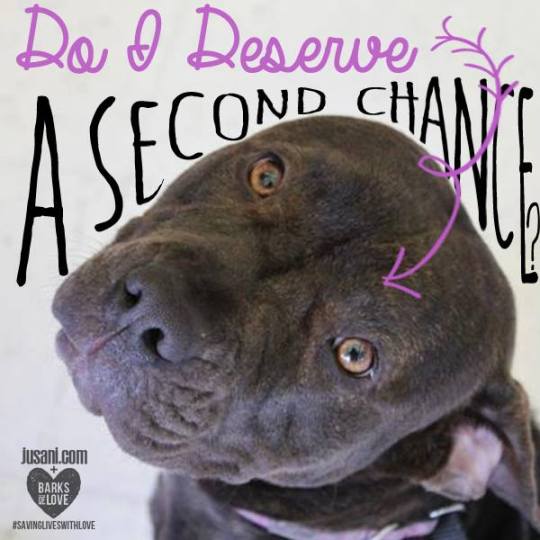
Protector, friend, ideal athlete, the sort of dog Americans aspire to have by their side. From the 19th century when the Pit and Bull breed was first created by breeding English Bulldogs with English Terriers up until the 1980s when the American Pit Bull was still seen as a child's best friend. The 80s is when their public image began to change for the worse, but these amazing family pets are making their comeback.
According to the American Temperament Test Society, Pit Bull Terriers scored better at 86.8% than Golden Retrievers, Collies and Beagles. This amiable breed has the 4th highest score out of the 122 recognized breeds.So let's see if there aren't a couple things that you don't yet know about this wonderful group of breeds, ranging from Neopolitan Mastiffs to Boston Terriers.
1. From 1914 to 1918, American Pit Bull Terriers were dubbed "America's Dog" and used on posters during World War I to sell war bonds and recruit for the US Military.
2. 60% of all dogs admitted to shelters in the US are killed and 60% of total dogs killed are labeled as Pit Bulls.
3. Bully breeds make terrible guard dogs. They do not naturally bark or become aggressive with strangers. Without extensive bite work training, you are more likely to find your Bully inviting intruders into your home with a happy wag and a warm welcome.
4. Because of stereotypes about these breeds’ aggression, there is a bias among media reporting on the incidence of attacks. This leads to over reporting on Bully attacks in the community, skewing their reputation for violence.
5. Oftentimes, families are forced to give up their Pit Bulls due to regulatory laws and pet policies against "dangerous breeds." According to National Geographic Wild, by 1986 over 30 communities had instituted breed specific regulations targeted at banning Pit Bulls. This was due to their growing popularity among dog fighters.
6. Finally, their jaws function completely normally, exerting a maximum level force of 235 pounds per square inch, while the overall dog bite force average is 320 psi.
These days nobody seems to have a balanced reaction to these breeds of pups--reacting with hysterical love and obsession or crossing the street in terror. Either way, they are pawing their way back into Americans' hearts and, we hope, will make their way out of shelters and into their very own forever homes.
Sources:
National Geographic Wild
0 notes
Text
Three Animals Find Unexpected Purpose in the Military
A lot of the technology we see around in the modern world was first developed by the military and then reapplied to civilian life. The most obvious example is the Internet, which has its roots as a communications network capable of surviving a nuclear attack. And is now a ubiquitous tool and time-waster.
But the military also uses the natural world in creative ways to aid soldiers:
BEES!
Bees have been employed as war tools since the time of the Romans. And why not? They have toxic stingers and are generally in a bad mood. While it might have been effective for a legionnaire to chuck a hive at a horde of Gauls, weaponized bees aren’t a thing anymore.
Now they sniff bombs. That's right: bombs. Bees can detect the trace components of TNT and other materials in the same way they detect pollen. The trick is to train the bee to signal non-bee personnel that they sense explosives. Bee trainers condition the bees to expect sugar water when there are explosives in the area. If a bee smells C-4, and that smell has been associated with a sugary reward, then the bee will extend its proboscis. A teeny sensor attached to the bee picks up the motion, thereby signaling that a bomb is somewhere nearby.

Bees, man.
Dogs

A lot of people know about the usual role dogs fill in military and law enforcement settings: guarding, attacking, and sniffing. But dogs can also be instrumental in soldiers’ lives after they come home.
Groups like Pits for Patriots train dogs to comfort and assist service members and first responders dealing with anything from PTSD to social anxiety. Any pet owner knows the limitless affection a dog affords its owner, not to mention the intuitive way dogs sense stress. A trained service dog can make a huge difference in the life of a veteran.
You can help Jusani Culture help Pits for Patriots help our nation’s veterans right now, quick and stylish.
Dogs, man.
Dolphins
One of the good things about Florida is the opportunity to swim with dolphins, those chipper and adorable marine-mammals. Dolphins are also some of the most intelligent creatures on earth – or, as my Bostonian grandmother likes to say, “wicked smaht.” The US Navy has recently tried to harness their intelligence for military uses – they’re still brainstorming the military applications of “cute” however.
During the Vietnam War, the Navy deployed dolphins to guard military boats from enemy swimmers. In 1975 the Navy began training beluga whales and sea lions to recover submerged equipment at greater depths and colder temperatures. For a more complete history of War Dolphins – which is more scandalous than you might think – check this out.
Today there are 100 bottlenose dolphins, California sea lions, and beluga whales active in the US Navy, detecting mines, protecting harbors, carrying out surveillance missions, and participating in NATO drills.
Dolphins, man.
0 notes
Text
5 Treat Recipes for Your Cats and Dogs to Enjoy This Holiday Season
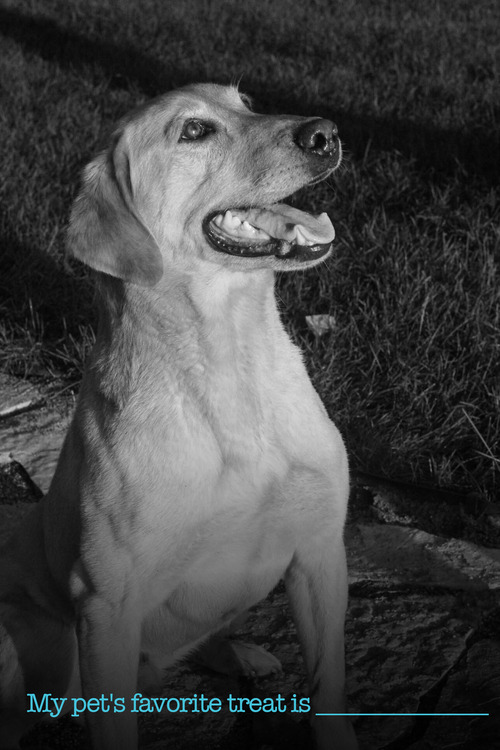
It’s the holidays again! Family is gathering from near and far to be together and people are making last minute trips to gather gifts and groceries before the big rush of last minute spenders. Hot cocoa, movies, and bonding time in the kitchen will be enjoyed. Make sure to make room for your furry babies during this hectic holiday season. They can enjoy the festivities as well.
Whether you have a purrfect Feline or a rambunctious canine, it is important to involve them in the festivities. Your furry babies enjoy holiday treats, just like you! So, why not cook up some yummy pet treats that will keep the urge to feed them table scraps at bay? This way, you know that what you’re feeding your pets is safe to eat and will get them purring and their tails wagging!
Please note that pets can also have allergies and certain foods can poisonous to your pets. Before trying these recipes, make sure they do not contain any food that your four legged love one may be allergic too.
Recipes to Bring the Hunter Out in Your Feline
Kitty Tuna Dreams – A wonderful treat made out of tuna with a wonderful video of a special kitty who had the privilege of testing them out.
Kitty's Favorite Turkey Balls
Recipes to Bring the Good Boy Out In Your Canine
Bacon Flavored Dog Biscuits
Sweet Potato Dog Treats
Banana and Honey Dog Treats
0 notes
Text
Cat People vs. Dog People: The Battle Continues
The date was going well. Kaley had just taken a sip of coffee and was chatting about her family when she pulled out her phone.
“Here, look!” she said, pointing the screen toward Jack. “This is my cat, Buffy. Isn't he adorable? Here he is under the table...on my bed...at the Christmas party...”
The walls seemed to crash down around Jack as Kaley blissfully swiped through the pictures on her phone. She was a cat person. A cat person.
“Look, I...I have to go,” he said, hurriedly getting up and throwing on his parka.
“But you haven't even finished your coffee!” said Kaley, finally tearing her eyes away from a picture of Buffy in a pink sweater.
“You can have it,” said Jack without making eye contact. “I have to go, uh, water my...carpet.” And without a glance back, he rushed out the door. Kaley shrugged and continued to look through her cat pictures.
Cats or dogs? Sometimes it seems like people are more passionate about this subject than the presidential election. Dog people claim that you won't find a more loyal pet than a canine. Cat people swear that felines have all the brains. Regardless of their exact differences, there's no doubt that cats and dogs can be quite unalike.
But what about their owners? Are dog people and cat people really that disparate? A study by the Association of Psychological Sciences revealed that there are proven differences between the two groups.
Dog fans tend to be much more extroverted, agreeable, and lively. They enjoy the energy put into taking care of a dog and the social aspect that comes from taking it on a walk. Cat lovers, on the other hand, are generally introverted, non-conformist, and yes, smarter. (What? It's been proven here: http://www.independent.co.uk/news/weird-news/cat-people-more-intelligent-than-dog-people-study-claims-9479741.html)
But not to worry, dog lovers: people who own dogs are healthier on average than their feline-loving counterparts. Dog people have lower blood pressure, lower body mass, and exercise more often. Overall, the value dog lovers seem to hold dearest is being outgoing. Cat people, on the other hand, prize their independence.
Yes, we can be very different. But I think we can both agree that whatever pet you have, be it cat, dog, or owl, you'll be much happier than those poor souls who don't own a pet at all.
Showcase your love of pets even more by buying one of Jusani's Pits for Patriots hoodies. Every purchase helps a rescued pit bull train to become a service dog!
http://jusani.com/content/pits-patriots-ladies-unisex-hoodie
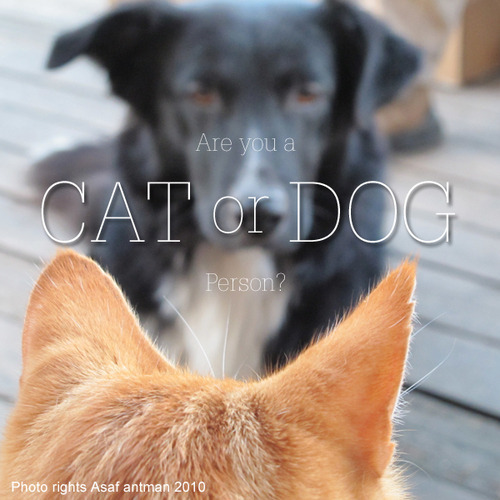
0 notes
Text
Five Things You Didn't Know About Saving Dogs
Whether you're a dog person, a cat person, or even a bird person, you probably have a pretty good idea of how an animal shelter works. You walk in, you look at pets, and then you take one home and become best friends for life. But there are a lot of little details you probably didn't realize. So without further adieu, I present to you five things you didn't know about saving dogs.
You can search for dogs online.
At sites like petfinder.com, searching for the perfect pet is as easy as shopping for a new pair of shoes (but much more rewarding). You can select attributes such as location, breed, gender, and even personality traits, which quickly narrows down your options. The website then directs you to actual animals that fit your criteria and are just waiting to be rescued! If you want to adopt a dog but don't know where to start, help is just a click away.
You can't just grab the dog and take off.
Animal shelters need to get rid of pets. So it should be super easy to just pick out a dog and take it home, right? Unfortunately, this is not the way it works. Adopting a pet is not a simple process and most shelters will do a thorough investigation to make sure you're a decent, dog-friendly person. They'll interview you. They'll ask for references. And they'll check out your living area. Be prepared to prove that you deserve this dog, because the adoption process is not for the faint of heart.
There will be fees.
Going along with my previous point, it's not as simple as picking out your best friend and heading home. Be aware of the fees that go into adopting a dog. Most shelters ensure that their pets have a thorough check-up with a vet before becoming available for adoption. So, you’re adoption fee is going towards shots, spaying/neutering, parasite treatments, and microchips. Is it worth every penny? Definitely. But don't be caught off guard when you're asked to pay up!
Don't write off senior dogs.
Puppies! Little paws! Cuteness! New dog owners are generally inclined to go for the younger pets at the shelter because let's face it, baby animals are adorable. But the obsession over puppies often means that older dogs are forgotten. When you adopt a senior dog, you're giving them a home, a companion, and an escape from death row. And it's not just beneficial for the dog. Think about it this way: are you the same person you were in first grade? Hopefully not, because that bowl cut was pretty bad. People change when they get older, and the same rule applies to pets. By choosing an older dog, you'll have a better idea of its personality, habits, and energy level.
You can always provide a temporary foster home.
Not ready for a big commitment? Never fear, you can always take care of a dog while it waits for a permanent home. This little favor could save the dog's life, and it clears up room in the animal shelter too. The downside of foster pet parenting? You'll have to say good bye eventually...
Dogs aren't usually put in the shelter because someone didn't want them.
You thought I'd stop at number five, didn't you? Think again! I like to go one step beyond. The sixth thing you probably didn't know about saving dogs is that there are many reasons dogs are in the shelter—none of which place the blame on the dog. Allergies, expenses, and lack of time are the usual culprits. Or the owner could be moving to some tragic place that doesn't allow pets. Whatever the reason, it's safe to say that it's probably not the dog's fault, and they deserve a home as much as any other pet does.
What are you waiting for? Adopt a pet through Jusani at http://jusani.com/content/adopt-pet-today-save-life-and-gain-friend.

Sources:
http://www.slate.com/articles/life/heavy_petting/2012/01/animal_rescue_want_to_adopt_a_dog_or_cat_prepare_for_an_inquisition_.html
https://www.petfinder.com/pet-adoption/pet-adoption-information/misconceptions-pet-adoption/
2 notes
·
View notes